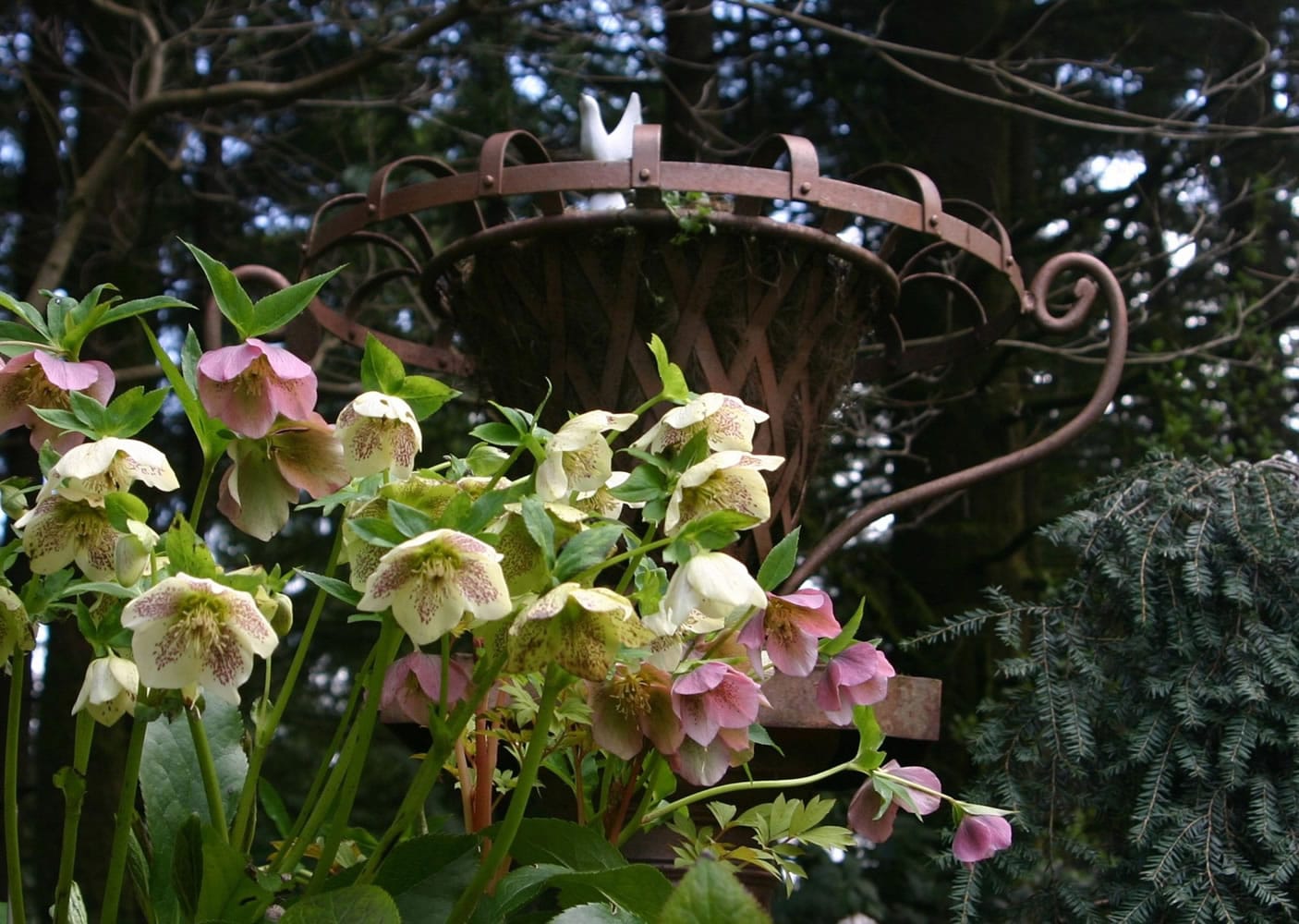April is an excellent time to plant conifers and broad-leaved evergreens as well as any deciduous trees, shrubs, vines and ground covers that you want to add to the spring garden.
Once you have finished planting, it is your job to make sure that new plantings get enough water to help them become established, especially in the event of dry spells in the next month or two. While you are at it, check the water needs of any plants that are situated under the eaves of the house or at the base of evergreens.
Water to equal 1 inch of rainfall per week. Spring flowering bulbs need water until the leaves and plant stalks begin to yellow. Water tulips with a soft spray from the side rather than from above so you don’t weaken the form of the flower. Once you bring any potted plants out of winter storage, check the soil
moisture, especially if they have been under the eaves or up against the side of the house.
Turn your compost pile to help accelerate the process of decomposition once the temperature of outside air begins to warm up. Pull weeds while their roots are shallow and before they set seed. This is one of those jobs that should be done as early as possible in the season. Pulling weeds is easier to do after a good rainfall. If there are brown spots in your lawn, make repairs now. Rake over the spots and add a thin layer of compost. Follow this by lightly seeding over the entire area.
You can also fertilize the lawn with a high nitrogen feeder to encourage greening before new growth gets too high. The last couple of weeks of sporadic sun and rain have given lawns a burst of growth, so it’s likely that you’ll have to begin mowing on a regular basis. If you are putting in a new lawn, you can sod or seed anytime this month. Top dress and reseed bare spots in established lawns. Keep the seed moist and begin mowing when the grass is 3 inches high. Be sure to use a lawn seed made for our unique garden conditions. The packaging should be clearly marked for planting in the Pacific Northwest.
Use iron to treat moss
For those concerned with moss in the lawn, early spring is the time to treat grassy areas with iron. Many lawn owners choose to deny the reality that lawns with moss will continue to have moss unless the conditions that cause the moss to grow are changed. If you do not correct the conditions, killing off the moss will only be a temporary fix. Aerate the lawn area and prune back branches of trees that shade the lawn. If you cannot correct the situation, now is the time to consider removing grass from this area altogether and planting with one of many wonderful, low-maintenance ground covers.
Those who know me know that I think the most rewarding job you can do in the garden is to plant plants. April is no exception. I believe that bringing home a lovely new plant, going through the process of digging in the earth and planting it in its place in the garden and then watching it grow is what gardening is all about. The hunt and search for the perfect plant in the perfect place. In other words, finding the perfect place in the garden may require additional transplanting in the future.
We are lucky that we can plant virtually year-round in the Pacific Northwest. For the most reliable planting of trees and shrubs, it’s recommended that you plant bare root plants before they leaf out or flower. This way, the plant’s first energy goes into establishing itself in the ground. Realistically, you may want to buy a tree when it is in bloom to be certain the flower is the size, shape and color you are after. If you buy container-grown flowering trees such as cherries, crabapples, and dogwoods and they are already in bloom, plant immediately.
If you have any spare time in this busy season, take a trip to your favorite nursery. You have had all winter to come up with a list of trees and shrubs and new perennials for your garden. At the top of my favorite plant list is the exquisite flowering crabapple, Malus “Adirondack,” just like the one planted in Bob and Sandra Archer’s charming garden. More than anyone else, we gardeners reap the rewards of our efforts with every new leaf and spring flower. For an added bonus, begin by knowing that you did a good job of planting.
Robb Rosser is a WSU-certified master gardener. Reach him at Write2Robb@aol.com.



